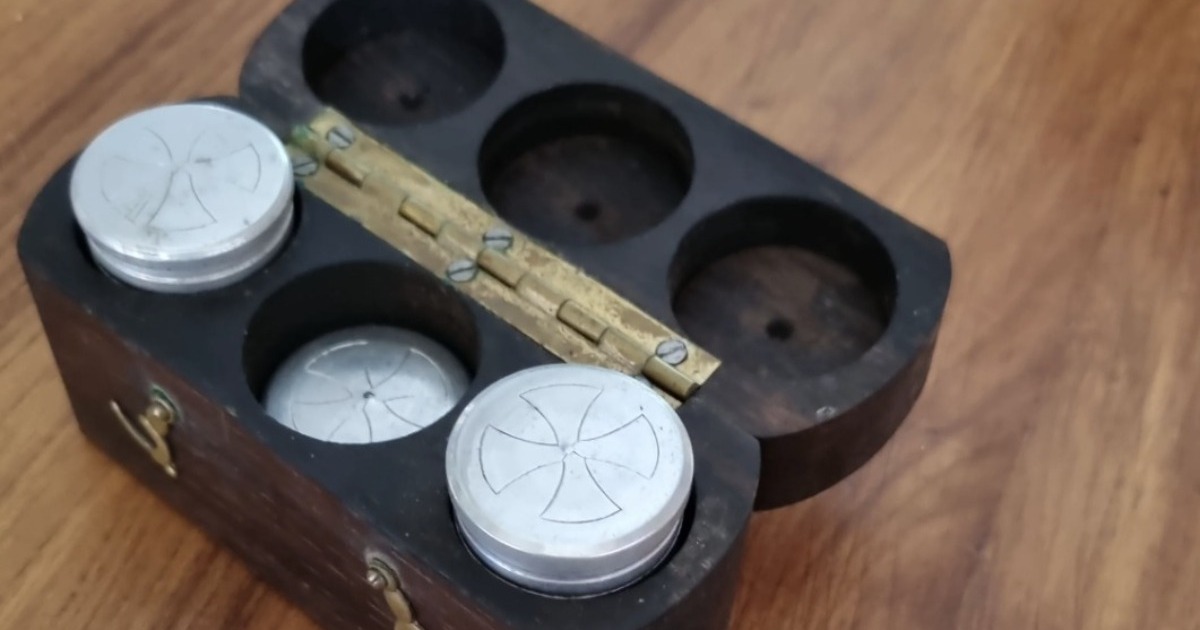The Tiny Object That Brought My Grandparents Closer Than Ever

Source: Reddit
I can still recall being on the old plaid couch in my grandparents’ living room watching the black-and-white television with the sound of the Sunday Mass in the background. He couldn’t be there in the flesh but that did not mean he was not included. My grandmother – a woman of faith and hard work – would always ensure that she had a small container containing the host before leaving for church on Sundays. She would come back with an additional consecrated host, a blessing in a form of a sacramental bread that made my grandfather capable to take part in the Eucharist while the prayer and songs could be heard from the television. It was a small, silent, but very significant object – a token of love to the Divine and to each other.
It’s a rather tiny but touching reminiscence, the sort that one does not easily forget. In those days, when technology was only slowly opening up the world to those who couldn’t go out, things such as these gave solace and community to the believers. In the mid Twentieth Century, watching Mass on television was still relatively new; churches began transmitting services to enable those who could not physically attend due to age, sickness or distance. The home was thus turned into a holy place for many people, a church for an hour, however, a church where the only light came from the television set.

However, what made this practice extraordinary was the fact that people such as my grandmother took time to sustain such. The little vessels, produced from pewter or silver, were widely used in most religious households. Sometimes called “pyxes,” these were used by the clergy to take the consecrated wafers to people who could not go to church. My grandmother’s was small, round and plain – a practical vessel for a powerful ritual. She would hold the wafer out to my grandfather and they would both close their eyes and say a prayer, praying together in a way that was not bound by the physical structure of the church.
With these containers and the practice of taking communion to homes, the society validates the role of faith in the society. People were once able to maintain their participation in their communities and their faith even when there were not many amenities to be had. It was not only the sacrament; it was the connection with something beyond the self that they wanted to have, regardless of the distance. For families like mine, this ritual was a way of being both religious and of continuing the family tradition. It is something that, while can be seen as less common nowadays, shows just how far people were willing to go in order to try and make sure that nobody would be excluded.
These containers – and the culture associated with them – were indicative of a shift that was happening in society more generally. In the light of the progressive globalization and development of the world, including television that brought events from distant countries into our homes, faith has not wavered. Despite the fact that we gradually learning to use the new technologies, the traditions which tied the society to the past were not letting go. Sunday morning church was not only a service, but, in a literal sense, it was something that could be taken home and given to others, via television or a small, transportable container.

As I write this, I am aware of the power of these small, material things that I have described. It was just a simple container; a humble receptacle of sorts, but it held within it so much which was far more significant – a bond with religion, with family and the will to hold on to culture even in the most trying of situations. It’s a lovely concept of how, in the age where things are less complicated, people ensured the things they held dear, were never distant even if the person was.
One can only recall these moments and be happy, recall how the grandmother took care of her husband so that he could still participate in something he enjoyed so much. It was a love tradition, a faith tradition, something that, even in its most basic and simple form, had a lot of depth.
I guess it is these small moments in life that one often looks back at and realise were the most important. And yet, as we see in these traditions, there is still the enduring reality of faith and family, even as life has shifted in so many ways, including that of watching football games in living rooms and on televisions.

The world is already fast-forward and there is virtue in those moments that made us stop the clock, those moments that made us look for something that has connection—whether that connection is by saying a prayer on Sunday or by the wafer passing from one person to another through a symbolic reverence. It’s a memory I cherish and one that, I believe, holds a lesson for us all: Thus, the things that tie people together, people’s history, and people’s religion will always have a way of surviving.